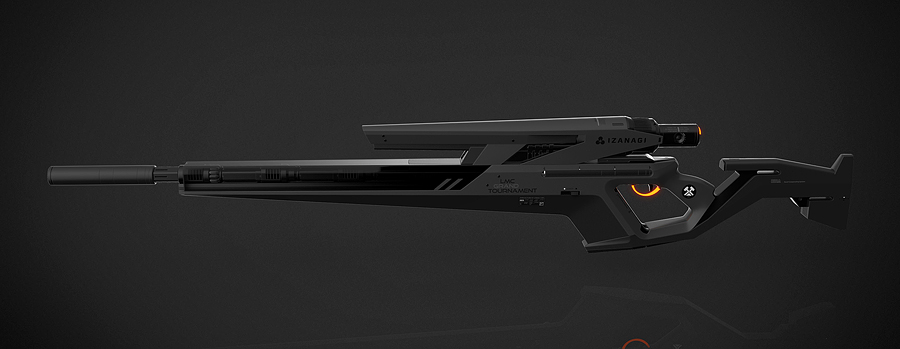Bombshell Genius

A Furutaka
OUT OF CHARACTER INFORMATION
- Intent: To create a 5.0 version of an electromagnetic plasma heavy repeater.
- Image Source: UT Sniper Rifle
- Canon Link: N/A
- Restricted Missions: N/A
- Primary Source: Chalacta anti-matériel rifle
- Manufacturer: Ringovinda Systems
- Model: Furutaka heavy repeater
- Affiliation: Open-Market
- Modularity: Yes; can change the scope
- Production: Minor
- Material: Durasteel, blaster components, ostrine
- Classification: Electromagnetic plasma anti-matériel Rifle
- Size: Very large (1.7m long)
- Weight: Very heavy (15 kg)
- Ammunition Type: Power cell, gas canister
- Ammunition Capacity: 500
- Reload Speed: Low
- Effective Range: Average
- Rate of Fire: Very High
- Stopping Power: Very High
- Recoil: High
- Free-floating barrel
- Recoil buffer (microrepulsors)
- Collapsible bipod
- Detachable 360-degree scope
- Advanced cooling system
- Battlefield range
- Very accurate
- Great penetration power (can penetrate up to 200mm of reinforced duracrete, or equivalent, while more heavily armored vehicles would have a dent into their armor)
- Explosive firepower
- Cannot be redirected by lightsabers
- High rate of fire
- Slow reload rate
- Heavy and bulky
- Very easy to detect using thermal and EM sensors
- Large amount of recoil
- Inaccurate at long range
Called the Chalacta-II in pre-production, the Furutaka is built using most of the same components as its predecessor. The free-floating barrel is a feature that allows the loss of accuracy in rapid firing (such as in suppressive fire) due to barrel harmonics to be reduced at a manageable level, while the barrel and the stock do not touch along any point along the barrel length, even though it is attached to the trigger assembly, called the receiver. In addition, a recoil buffer mounted into the stock, made up of micro-repulsors, allows the shooter to reduce the recoil felt to a more manageable level, while the collapsible bipod helps stabilize the weapon while fired. The great weight of the Furutaka, as with the Chalacta before it, while somewhat helpful against the recoil, is also a weakness, especially given its great size. Also, around the barrel are actually extruded durasteel heat pipes with internal zirconium coating, and the inside filled with ostrine, with the contact area maximized so as to maximize the outward flow of heat from the weapon to the outside environment. Even so, the higher firing rate also comes at a cost in both recoil and accuracy at longer ranges.
The use of miniaturized electromagnetic plasma cannon technology was chosen due to the various advantages of electromagnetic plasma, especially when used against lightsaber-wielders: if a lightsaber-wielder tries to block a shot fired from a Chalacta with a lightsaber, the contact of the round against the lightsaber would cause an ionic explosion that triggers magnetic reconnection, which would, in turn, would release the plasma contained inside the lightsaber back onto the wielder. Also, items surviving a volley of EM plasma fire will also get ionic whiplash. Which, given the nature of electromagnetic plasma weapons, would likely result in the vaporization of the areas hit by the plasma explosion, potentially reducing the targets into molten slag or possibly causing severe burns. Heavily armored targets would get holes punched into the armor, creating weak spots through which a second shot may be fired and penetrate the same spot. However, such unparalleled firing rates come at the cost of lowered accuracy at longer ranges and lowered reload rate in battle: for its extreme firing rate, a shooter would need one full post to reload the weapon, during which it is vulnerable.
Of course, such heat makes a Furutaka very easy to detect on thermal sensors upon firing, while the very nature of electromagnetic plasma makes it very easy to detect on EM sensors. Nevertheless, as with its predecessor, it can penetrate up to 200 mm of reinforced duracrete, making it a good weapon to use in ambushes and other types of surprise attacks against several kinds of targets: vehicles, fortified positions, lightsaber-wielders, tightly-packed infantry, to name a few.







